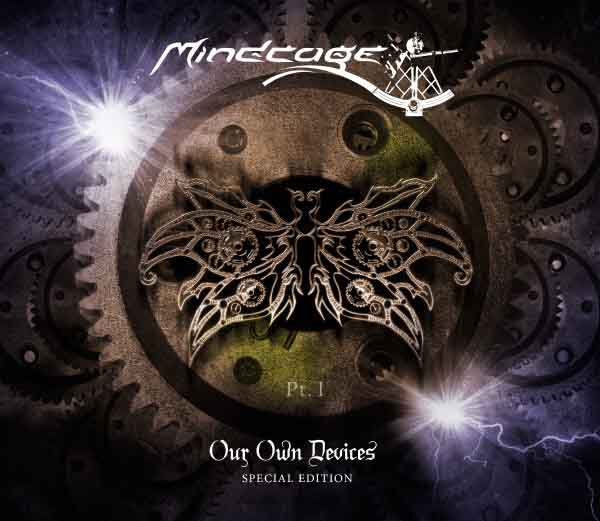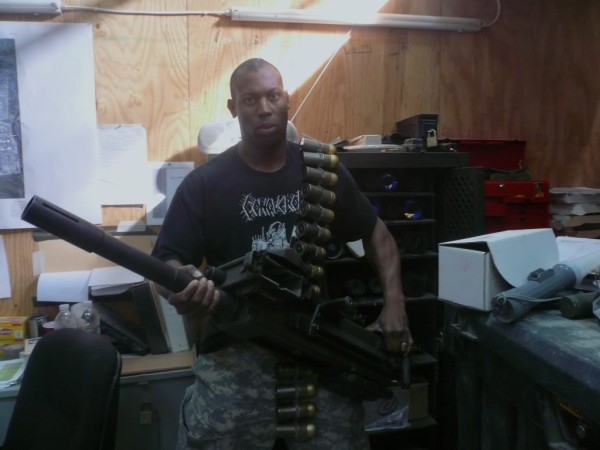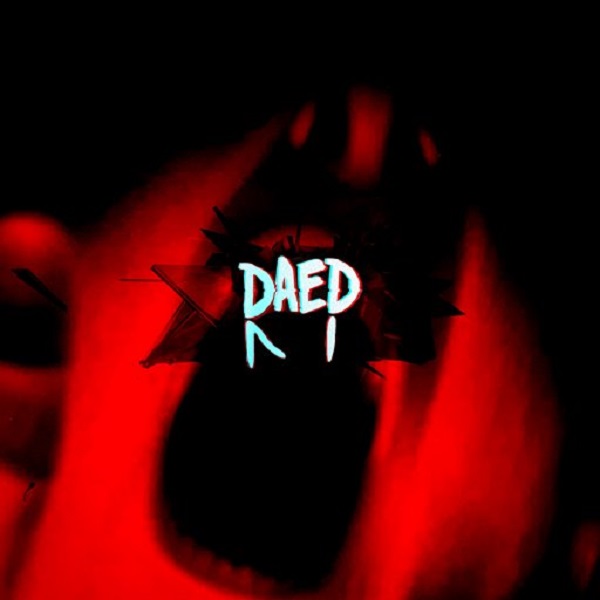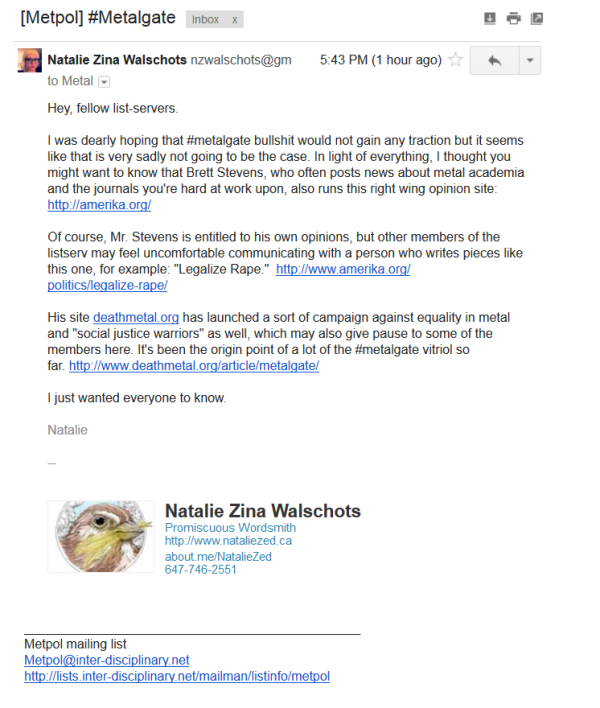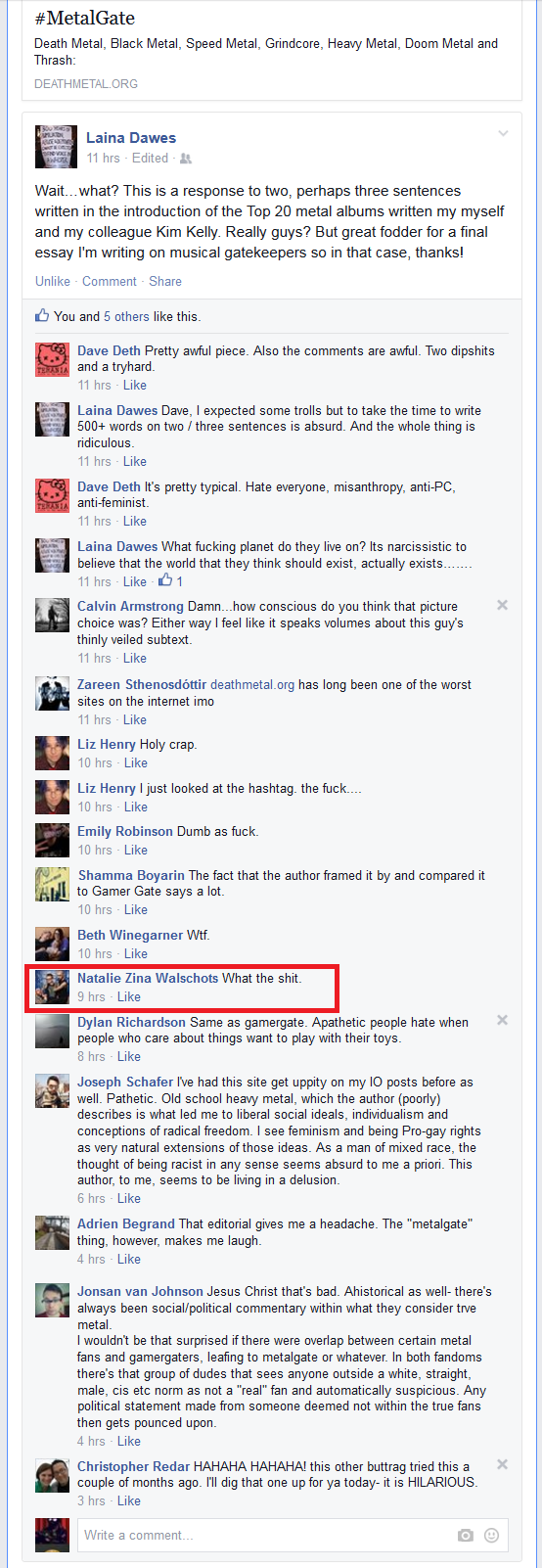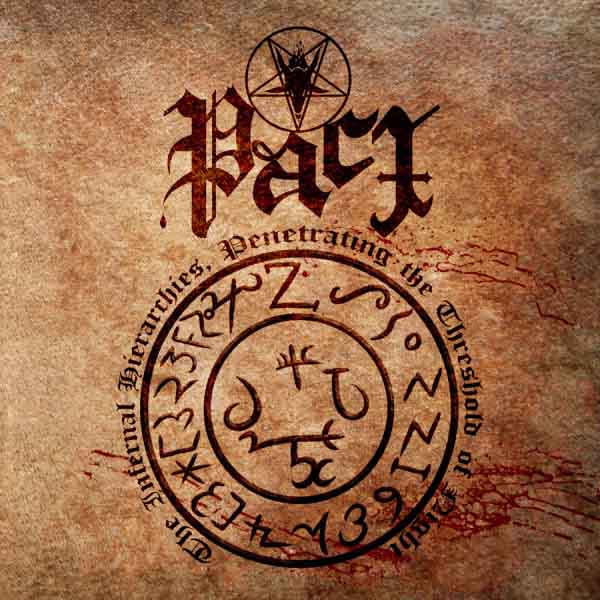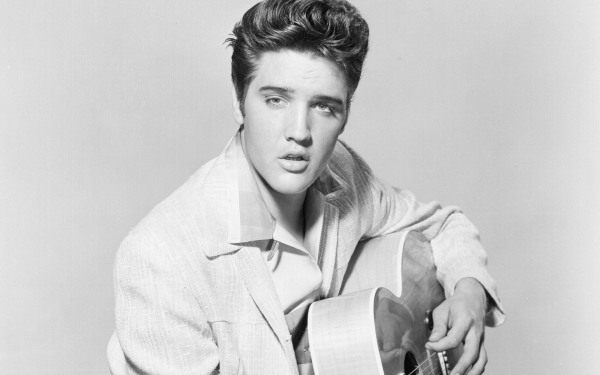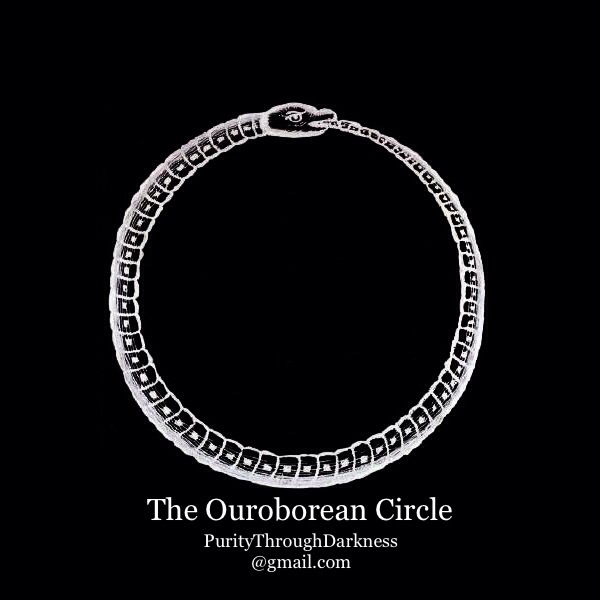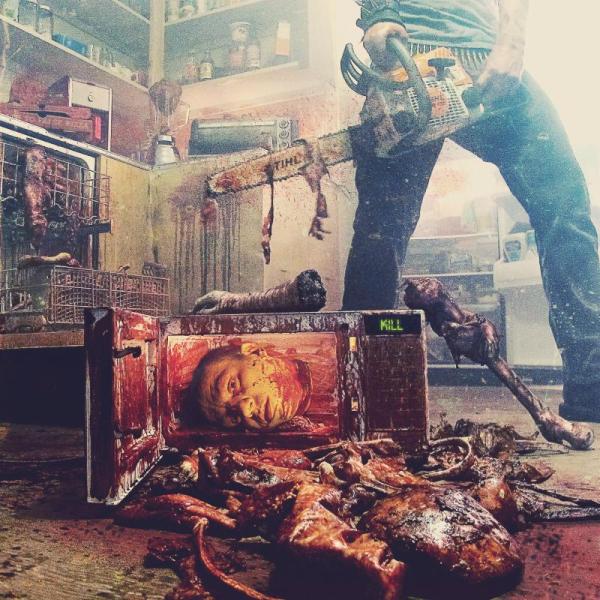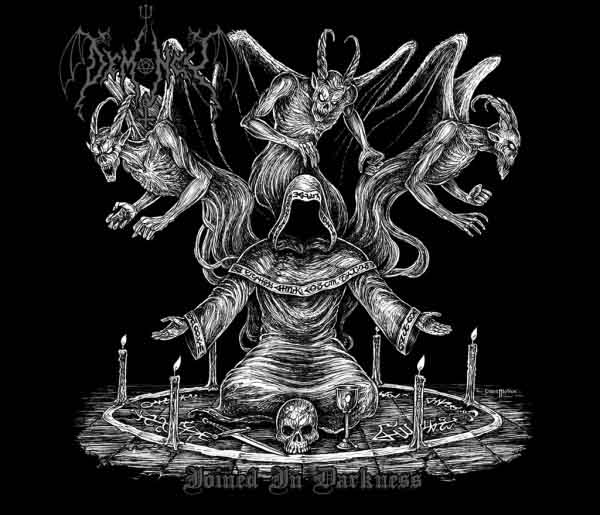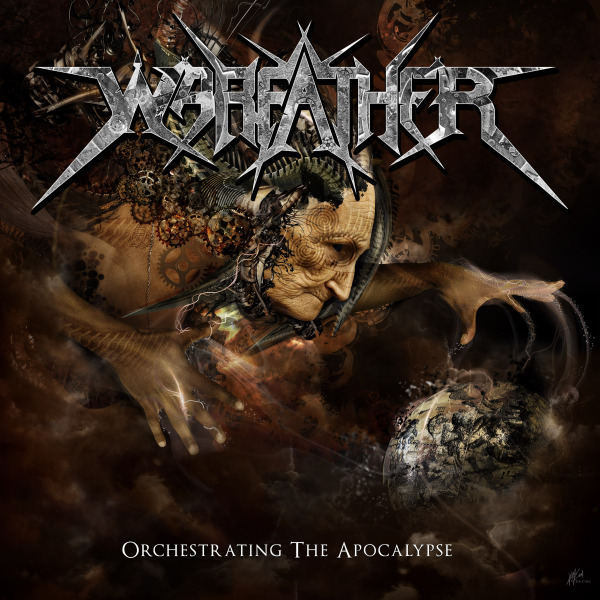Heavy metal with melodic vocal lines, Mindcage immediately calls to mind a cross between Queensryche and Candlemass, writing complex guitar leads on top of rock-rhythm classic heavy metal riffs. This allows Mindcage to create verses which showcase the melodic male and female vocals that serve as the lead instrument in these mid-paced songs, but also facilitate the inclusion of more intense metal riffing and soloing that will please fans of middle-period Iron Maiden. The rock-based focus on vocals pulls inside-out the extreme guitar-centric attitude of most metal bands, but with Mindcage, the result stands on its own.
(more…)
#metalgate SJWs prove their real purpose: censorship
Let us quickly get rid of a basic confusion: censorship is using social or governmental pressure to remove from view unpopular ideas that are also plausibly accurate depictions of reality. This separates the act of removing someone spraypainting “death to all metalcore” from a ban on articles about metalcore.
Social Justice Warriors (SJWs) comprise the driving force behind the incursion into metal against which #metalgate is a reaction. Metalheads do not want to be told what to think by a self-appointed cabal determining what is “true” based on their ideological agenda. It does not matter which agenda that is, only that it swallows up truth and metal equally and uses them as means toward its real goal, which is power and control.
Metal isn't PC so it can discuss things honestly, and invoke the self-inspection necessary to find your own ideals. #MetalGate
— The Cult of Jim (@TheCultOfJim) December 21, 2014
Our first #metalgate article pointed out that the agenda of such people is inevitably control. Written by Cory van der Pol, the article detailed how political movements assimilate genres like metal, re-purposing them for the movement’s own needs. He followed this up with an article showing how the methods used by SJWs are bullying. Passive-aggressive bullying perhaps, hiding behind the pretense of morality and “good” politics, but nonetheless bullying. Then he illustrated how SJWs are associated with metalcore and indie-metal and are using it to slowly blot out real metal and replace it with this ersatz and inferior substitute. Finally, he predicted that SJWs would deny and conceal their actual goal, which is to censor — see definition above — any metal that does not fit their ideological needs and by doing so serve as a justification for their employment in media, academia and promotions.
He was 100% correct.
Today SJWs mounted a concerted campaign to remove me from the MetPol mailing list, which discusses metal and politics. As of this evening, apparently I have been removed. Here are some of the highlights:
Can the mods please block Brett Stevens / writing an article like the one natalie linked to is not only repulsive it’s misogynist.
We should take stand against this kind of thing. It’s unacceptable. It’s offensive. Especially to survivors of rape and sexual assault. – Rosie Overell
I would feel immensely safer if he were removed. – Natalie Zina Walschots
I am aiming to give #metalgate and its instigators as little oxygen as possible, but am glad Natalie brought this up here and would support the moderators if they chose to show Brett and his sympathizers the door. This is a place where people strive to broaden the understanding of metal, not narrow it, and while narrow views have a place in the world they’re not in keeping with the mission of this particular list. – Beth Winegarner
As one of the people that this piece of shit screen-shot their FB page and posted on his website, I must add that what astounds me – but doesn’t necessarily surprise me, unfortunately – is the lack of comments from both this thread and my so-called metal ‘friends’ on Facebook and Twitter about racism that surrounds the issue. – Laina Dawes
I will say, however, that I have been dismayed by this situation and I remain in awe of Laina’s courage to speak out despite the harassment and terrorization she has received. – Jeremy Wayne Wallach
This is a public list, with public archives that you can search via Google, Bing or the search engine of your choice. They are open to all and can be read by non-list members without a login or leaving any identifying information. These people are voluntarily posting this data to a public list where they hope it will be read for years to come. With this kind of outcry, it is not surprising the moderators chose to avoid damaging the list with more such drama and to remove me. It was the act of the small group — a dozen members out of a thousand — who chose to demand that I be censored and removed.
I have been a member of this list for the past year, entering in discussion about metal and providing links to resources there, without engaging in a single political opinion. To my mind, #metalgate has never been about politics and whether one side is right or not. It is about the tactics of a certain group who, in Cory’s words, use politics as the mantle behind which they assume power. In other words, they are doing it “in our best interests” and against our wishes are educating, enlightening and improving us to make us good citizens of their ideal society.
I’d like to keep this conversation going without hammering on the idiotic obvious. I appreciate the banning, but I’ll echo Olivia by quoting her: “…banning a single individual is not going to solve the problems of racism and sexism in the metal community. These prejudices are within us and among us, and begin with the complacency purchased by our various privileges.” – Sara Sutler-Cohen
My stance on this issue has always been clear: we stood up to the Christian right, then we stood up to the NSBM people, and now we’re standing up to SJWs. Metal has a unique view of life and a unique viewpoint on how to handle certain things, and it benefits no one to have metal start parroting the points of view of other groups. We should have a diversity of approaches instead of a lock-step uniform viewpoint enforced with guilt and threats of censorship and lack of tenure. My participation in this entire event was as someone opposing censorship, and those who can read will note that none of our articles here targeted the beliefs of SJWs, only their methods and motivations.
During my twenty years of writing about metal, I have sought to avoid both political dogma and commercialization. After initial experiences, I did not trust academia because of its long-standing bias in one trend or another. (And if metal hates anything, it is trends.) From starting the first underground metal site on the net, first as FTP and later as a series of web sites, I have always advocated an open mind and open discussion. This apparently is not the agenda of SJWs and despite their initial denial, they proceeded exactly as their dissenters said they would: with calls for censorship and propaganda.
In the meantime, #metalgate is gaining momentum with new articles in the work on both metal and social commentary websites. The SJWs have defeated themselves by becoming the caricature that their critics said they always were. And if we need to look for a silver lining to this cloud, it is the confirmation of that stereotype.
25 CommentsTags: censorship, gamergate, metalgate, sjws
Daed – RaEP
In metal, the “-core” suffix tends to mean a derivation from the endless stream of hardcore-infused and relative similar styles of music. But in electronic music, “-core” implies something different entirely, and in glitchcore band Daed this term takes on its original meaning as music that adopts the strictest standards for its own integrity and rejects the touchy-feely impositions of what the audience thinks it wants. Would you believe an audience survey? Neither do glitchcore artists.
Like metal, this genre — which sounds roughly like someone tuning an analog radio, switching between stations rapidly — takes an idiosyncratic look at life through music that aims to unsettle, provoke and disturb. Deriving its roots from the rapid pace of drum ‘n bass with the hip-hop penchant for sampling widely and forging it into song, glitchcore makes a collage of existing genres and thrusts them through a filter of someone holding down the fast-forward button. Daed takes on this genre by giving it a unique structuralist mindset where the samples and glitchy patterns seem to represent a voice bleeding through a cognitive barrier and manifesting in different forms, rather than many different voices only incidentally in tune. Sampling wildly from chiptunes, classic techno, hip-hop, found sounds and many electronically mangled raw sonic forms, Daed creates the equivalent of walking through a busy cosmopolitan city and seeing all of the different options and chaotic divergences, but through the same eyes.
What makes RaEP interesting is its tendency to pick up all these bits of scattered music and reinvent them, weaving skeins of other influences through the bunch. The Autechre-inspired tendency to find a place of peace after the chaos through which beauty flows, itself derived from one of the seven ritual stages of a techno set, manifests itself in many of these tracks. Some would compare this to Squarepusher without the reliance on fingers to keep up with the urgent percussion, allowing faster motion and more dramatic tempo changes. No vocals mar this style except those which are sampled, processed, re-sampled and distorted again. Like a high speed inner dialogue, this music deconstructs its world and itself to find commonality between these many bits and its own unique, personality-rich perspective.
- Daed – RaEP (free download)
Tags: daed, glitchcore
#metalgate SJWs fight back
As you, our readers, know we tackle many difficult topics on this blog. Some involve pointing out what metal is trivial and what is not; others tackle “big people issues” like politics, society and moral questions. One of those has been Cory van der Pol’s recent series of articles on #metalgate, a conflict between “Social Justice Warrior” (SJW) journalists and those who feel that politics should not invade metal.
Death Metal Underground has for over two decades committed itself to truth, meaning those ideas which correspond to reality and imagination at the same time. We have broached many difficult issues and disappointed people from all sides of the political, social, sexual and ethnic spectrum, as well as delighting many others of similar orientation. If you like truth and metal, you will like this blog even if it has a somewhat acerbic style.
It is disappointing to see grown men and women behaving in such a way that there is only one word for them: bullies. Like witch hunters, bullies rely on a perception of social support in order to shame, humiliate and ostracize others. It is one of the lowest attributes of humanity to use bullying instead of the original form of getting anything done, which is honest discussion and debate. In fact, bullying is meant to prevent exactly that.
People such as the SJW above do not want a discussion; they want to ensure one does not take place. It is for this reason that we at Death Metal Underground proudly resist them and continue to run controversial articles by controversial writers. Anything else is preaching to the choir and I see no reason why we should waste your time with such a mundane endeavor.
Cory van der Pol may have another article coming on the #metalgate issue, or he may not. Regardless, Death Metal Underground will continue its mission of providing quality metal information no matter who gets offended and decides we are Satan. We will save you the trouble: we are the Satan to your pharisaic interpretation of God that excludes truth in the name of obedience, and we will always oppose you.
15 CommentsTags: gamergate, metalgate, natalie zina walschots, sjws
Pact – The Infernal Hierarchies, Penetrating the Threshold of Night
When black metal first hit the big time, my first thought was that the music industry was going to do to death metal and black metal what it did to hardcore music. When I spoke this out loud, people laughed it off, thinking that nothing that close to their hearts could change. Pact proves me right to such a degree that I doubt these people will even talk to me today.
Simply put, this album reduces black/death metal to formula in the late hardcore punk style, after the music industry came in and sanitized its opinions and enforced institutional-style songwriting. It got “professional.” And here we have a band which writes like a cross between later Gorgoroth, later Mayhem and early Impaled Nazarene. Pact carefully edits its material so that no extra riffs clog this album and each riff is roughly the same quality, which is fairly high but not exceptional. The problem is that all songs are template-cut just like the pop stuff you hear on the radio. Once you have heard five minutes of The Infernal Hierarchies, Penetrating the Threshold of Night, you have effectively heard the whole thing.
Pact like modern metal style vocals but write songs like a more literate hardcore band, using verse-chorus pairs to lead into a bridge that returns to the dominant theme. They vary up the riffing somewhat by using longer riffs and contrapositing them with variations on themes, but essentially this album pounds out the same circular formula per song. Tempi do not vary greatly nor do the changes between them differ, which results in the feeling of being trapped in a procedure like a doctor’s office or traffic court. While there are a few moments of insight on this album, as a whole it serves as a standardization of black metal to the point where it is interchangeable and thus is easily forgotten even while you are listening to it.
2 CommentsTags: black 'n roll, pact
Rock music hates metal and wants to assimilate it
The Rock and Roll Hall of Fame has again slighted heavy metal by including musicians from all genres except metal while some of metal’s longest-running, widest-selling and most-acclaimed acts go unnoticed. As one metal writer pointed out:
“This is a symptom of the disrespect across the board toward hard rock and heavy metal,” says Trunk. “The Grammys haven’t gotten any better since they gave Jethro Tull a Grammy instead of Metallica (for the first ever Best Hard Rock/Heavy Metal Performance trophy in 1989).”
Exhibit A of that lack of respect: late, great Slayer guitarist Jeff Hanneman was a glaring omission from this year’s “In Memoriam” segment at the Grammy Awards.
Back in the 1950s and early 1960s, rock was the bad boy of popular music.
Then in the late 1960s the hippies took that to a new place where rock was not the bad boy so much as the voice of protest.
Punk stole the bad boy crown again by ducking out of the hippie world and becoming antagonists of everything people wanted to believe.
Metal did the same thing but in a different way. Where punk said our society was rotted and dying, metal pointed out that our souls were rotted and dying because we were in denial of life itself.
Ever since then, other groups have been trying to reclaim the bad boy title, with hip-hop the most plausible candidate. The only problem is that all of them follow the late 1960s model, so their bad-boy-ness is tempered.
Rock ‘n Roll has not forgiven metal and punk for stepping out in a different direction. They are still those who strayed from the pack, and ideally would be assimilated (rock music with a metal or punk surface) or destroyed.
Don’t hold your breath, metalheads, that the Rock and Roll Hall of Fame will recognize metal. To them, we are the enemy and we are either conquered and made into rock, or must be excluded from their special bad boy club.
12 CommentsThe Ouroborean Circle declares its presence
Metal spills over into other areas of life. Every person has a philosophy, and if they are attracted to metal, it is that personal worldview that drives them toward it and not the other way around, although certainly metal further informs that worldview. As a result, metal finds similarity in other ideals that generally seek truth instead of seeking social approval.
For this reason, society has always feared heavy metal. Society is based on control, which is based on the idea of creating a “truth” which manipulates people. This fake truth is to some degree necessary to keep people doing the things required for us all to survive, but over time it becomes tempting for those in control to skim off the top. To do this, they expand the fake truth to obligate people to do stuff that benefits the people in control.
In the 1960s, metal gave the finger to both the establishment and the hippies who were basically preaching a watered-down version of the fake truth in vogue in that era. In the 1990s, metal gave the finger to the vision of us all happily getting along. And now in the 2010s, metal may be giving the finger to the idea of society itself. This document recently appeared in our unpublished staff-only address:
INDULGE
Satan represents indulgence instead of abstinence!
- Indulgence is a model of pleasure seeking activity.
- Empirical pleasure must exist in contrast to self-destruction if it is to be quantified in the context of carnality.
- Consumption of repetitive experience is a pathology, not indulgence.
This group will not be for the slaves, but the masters. It will draw lines and cause anger.
Membership is open and expressive. ID cards will be available soon.
[illegible] humans do not entry.
I have written back to the email address provided and await a response, although probably I am not elite enough to qualify for membership or even a ten-question interview. Whether this is fallout from the Cobalt debacle or not remains to be seen.
7 CommentsTags: anti-social, evil, indulgence, occult, Satanism
Exhumed to release Gore Metal: A Necrospective 1998-2015
Exhumed released its debut of Carcass-influenced bouncy death metal, Gore Metal in 1998 with a bounty of crepitant grindcore riffs and death metal surging power. Almost two decades later, Exhumed returned to the studio to re-record its first album as Gore Metal: A Necrospective 1998 – 2015, which will see release this February via Relapse Records.
Thanks to increased musical proficiency through years of recording and better technology, Exhumed promises a bigger-sounding and more intense version of the debut. Vocalist/guitarist Matt Harvey said, “I’m super pumped that we got the chance to re-record Gore Metal. I don’t think any of us were happy with how it turned out the first time around, so getting another shot at it meant a lot to me personally. I was also really excited to have our old friend Ross Sewage reprise his vocals on the new version, ensuring that it still sounds like that era of Exhumed, though things are a lot more audible this time around!”
As a precursor to the release Exhumed will tour North America after their current European tour alongside Aborted, Origin and Miasmal. With co-headliners Napalm Death and Voivod, Exhumed will launch their tour on January 27th in Miami and continue to a final show on February 28th in Houston. Additional support will be provided by Iron Reagan and Black Crown Initiate with Ringworm, Dayglo Abortions, Theories and Phobia to appear on select performances during the tour.
Gore Metal: A Necrospective 1998 – 2015 Track Listing:
1. Necromaniac
2. Open The Abscess
3. Postmortem Procedures
4. Limb From Limb
5. Enucleation
6. Casket Crusher
7. Death Mask
8. In My Human Slaughter House
9. Sepulchral Slaughter
10. Vagitarian II
11. Blazing Corpse
12. Deadest Of The Dead
Exhumed 2015 North American tour
EXHUMED w/ Aborted, Origin, Miasmal:
12/15/2014 Grillen – Colmar, FR
12/16/2014 Steinbruch Theater – Darmstadt, DE
12/17/2014 Jubez – Karlsruhe, DE
12/18/2014 Rock It – Aalen, DE
12/19/2014 Heavy Xmas – Zürich, CH
12/20/2014 Turock – Essen, DE
EXHUMED:
1/24/2015 The Rock – Tucson, AZ
1/25/2015 Red 7 – Austin, TX
w/ Napalm Death, Voivod, Iron Reagan, Black Crown Initiate:
1/27/2015 Grand Central – Miami, FL w/ Ringworm
1/28/2015 State Theater – St. Petersburg, FL w/ Ringworm
1/29/2015 The Masquerade – Atlanta, GA w/ Ringworm
1/30/2015 Ziggy’s – Winston-Salem, NC w/ Ringworm
1/31/2015 Soundstage – Baltimore, MD w/ Ringworm
2/02/2015 Gramercy Theater – New York, NY w/ Ringworm
2/03/2015 Union Transfer – Philadelphia, PA w/ Ringworm
2/04/2015 Opera House – Toronto, ON
2/05/2015 Maverick’s – Ottawa, ON
2/06/2015 Club Soda – Montreal, QC
2/07/2015 Palladium – Worcester, MA w/ Ringworm
2/08/2015 The Chance – Poughkeepsie, NY w/ Ringworm
2/09/2015 Agora Ballroom – Cleveland, OH w/ Ringworm
2/10/2015 Reggie’s – Chicago, IL w/ Ringworm
2/11/2015 Amsterdam – Minneapolis, MN w/ Ringworm
2/12/2015 The Zoo – Winnipeg, MB
2/13/2015 The Exchange – Regina, SK
2/14/2015 Republik – Calgary, AB
2/15/2015 Starlite Room – Edmonton, AB
2/17/2015 Rickshaw Theater – Vancouver, BC w/ Dayglo Abortions
2/18/2015 Studio Seven – Seattle, WA w/ Theories
2/19/2015 Hawthorne Theater – Portland, OR
2/20/2015 Metro – Oakland, CA w/ Phobia
2/21/2015 Strummers – Fresno, CA w/ Phobia
2/22/2015 House of Blues – Los Angeles, CA
2/23/2015 Club Red – Tempe, AZ w/ Phobia
2/24/2015 Sunshine Theater – Albuquerque, NM w/ Phobia
2/25/2015 Summit Music Hall – Denver, CO w/ Phobia
2/26/2015 Granada Theater – Lawrence, KS w/ Phobia
2/27/2015 Gas Monkey – Dallas, TX w/ Phobia
2/28/2015 Fitzgerald’s – Houston, TX w/ Phobia
Lineup on Gore Metal: A Necrospective 1998 – 2015:
Rob “Bodybag” Babcock – bass, backing vocals
Mike Beams – guitar, backing vocals
Bud Burke – lead guitar, backing vocals
Mike Hamilton – drums
Matt Harvey – guitar, lead vocals
Ross Sewage – lead vocals
Backup vocal “Slay Team”: Alejandro Corredor, Dr. Philthy
No Comments“…a gleeful celebration of death metal…” – Decibel
“EXHUMED is Carcass reincarnated.” – Terrorizer
Tags: exhumed, gore metal, relapse
Demoncy to release Risen From the Ancient Ruins and re-issue Empire of the Fallen Angel
In addition to unleashing a re-issue of its classic Joined in Darkness, nocturnal subterranean black metal band Demoncy plans to release a new EP entitled Risen From the Ancient Ruins and a re-issue of its full-length Empire of the Fallen Angel a/k/a Eternal Black Dominion.
Forever Plagued Records intends to release both of these “this year,” according to an announcement on its email newsletter, but this language does not clarify which year this is since 2014 is nearly done. Most likely, this announcement was intended for early 2015 and reflects a 2015 street date for these albums.
Here is the full statement:
3 CommentsForever Plagued Records is also very proud to announce DEMONCY will be releasing a new EP this year entitled “Risen From The Ancient Ruins”, it will include three new tracks and one ambiant. As a follow up, another DEMONCY release FPR has planned for this year, namely, the new rendition of “Empire Of The Fallen Angel aka Eternal Black Dominion”. Both releases will feature IXithra’s voice of unclean spirits.
Warfather – Orchestrating the Apocalypse
We can look at objects as their surface traits, or attributes they have in different categories at different times, or look at them as shapes (or even forms) which manifest themselves in those attributes. When this logic is applied to genres, we quickly see how complex the term “death metal” can be.
If you ask your average journalist about death metal, s/he will start listing off descriptors, like heavy distortion, guttural vocals, intense riffs, blasphemic and occult topics. The implication will be made that all of these things together make death metal and yet, four average musicians could bash out an album of Dolly Parton covers using those attributes in an afternoon and it would be no more like death metal than the original.
What holds death metal together is its internal language where riffs correspond to structure. The process of assembly, called “riff-gluing” by Bob Bacchus of Soulburn/Asphyx, means knitting those riffs into a narrative where they both comment on one another and lead to a series of mood or atmosphere changes in the whole which suggest some kind of event, realization, journey or gesture. With this approach, the death metal style of riffing is inevitably invented, as is the need to have vocals take a background role and guitars to lead and dominate over drums, bass and vocals. Even if death metal had zero influences before it, if people set out to reinvent it based on that idea alone they would end up with something a lot like underground death metal.
Warfather combines the charging high-speed riffs of Angelcorpse, the abrupt transitions and chanted choruses of Hate Eternal, and the love of sweeps and odd melodic twists of post-metal and metalcore. In doing so, it loses sight of what makes death metal a whole, and instead takes the pieces it finds most convenient and makes out of them something else. Because this something else lacks a centrality, it must choose between being so chaotic it becomes boring or so repetitive that it becomes boring. Warfather choose the latter and pound out catchy choruses and verses with strident rage guiding the vocals, but have nothing to unite them while seeking to break them up with flourishes to disguise the lack of development. Songs do not ramble, but charge in different directions and then resume back at the starting point before fading away. While there are some good riffs on here they are lost in a void of context. The end result is organized disorganization where all the pieces fit together and mean nothing.
On paper, Orchestrating the Apocalypse seems like it would offer everything a journalist uses to describe death metal: the riffs, the vocals, the loudness and perhaps even the blasphemy. As a listening experience it misses the intensity of death metal by a mile through focusing on these surface traits and missing the motivation to put them in a meaningful order that made death metal so terrifying, mindblowing and vertiginously exciting. All that remains is to finish this review and move on.
http://www.youtube.com/watch?v=7-AvSmyVSR8
17 Comments